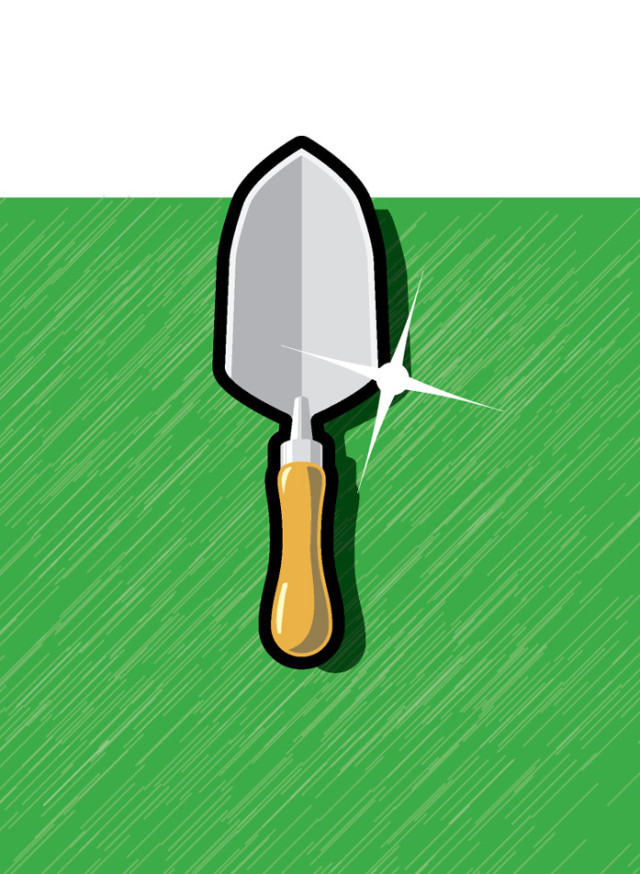Tooling Around

As I mentioned in my Dig column, it’s important to clean your tools at least once a year, not only because your tools will last longer but also because they will be more pleasurable to use. Who wants to pick up a crusty old shovel, only to get splinters from the handle? Take care of your tools and you’ll be surprised by how excited you can get about picking them up and using them!
Here’s how I clean my tools. Mind you, I haven’t done it yet this year. But when I do – hopefully next weekend – you’ll find me sitting under the shelter of the garage door with a "beverage of choice" in hand, feeling very smart and handy indeed!
1. Gather your materials:
- a scrub brush
- a couple of cotton rags
- 80-grit sandpaper, steel wool and/or a wire brush
- motor oil and kerosene or WD40
- linseed oil
- your tools to be cleaned
- a comfortable place to sit and do your project (very important!)
2. Hose off your tools and scrub off soil or mud with a brush
3. Dry them with a cotton rag, then rub the blades with steel wool, 80-grit sandpaper, or, if they’re really rusty and pitted, a wire brush to clean off rust and smooth rough, pitted metal
4. Clean the blades. Cut some motor oil with kerosene in a 2:1 ratio (that’s two parts motor oil to 1 part kerosene -or use WD-40) and rub it onto any steel parts with a clean cotton rag
5. Rub wooden handles with a cotton rag dipped in linseed oil. Best to let it really soak in for a day before using the tools. And do pay close attention to the instructions on storing kerosene and linseed oil: they are flammable materials and must be stored safely.
6. Hang your tools so the blades are not touching anything. In the best of all worlds, your tools will hang from a tool rack that, well, both lifts and separates them. This helps keep them sharp and less rust-prone. But in a pinch, you might use a big barrel or bucket and upend the tools in it so their blades are facing skyward instead of being ground into the concrete floor of your garage or tool shed. Just be careful not to poke your eyes out on those pitchfork tines!
ANOTHER OPTION:
Some people use a 5-gallon or larger bucket filled with coarse sand which has been doctored with motor oil to clean their tools. It’s quick and easy and helps keep your tools cleaner and prevent rust.
My problem with this is that I wouldn’t know what to do with the dirty, petroleum oil-infused sand, which would need to be disposed of and replaced periodically – or often if you didn’t thoroughly clean your tools before sticking them in the sand. I have enough angst in my life about waxy coffee cups and take-out food cartons and don’t need another recycling problem to worry about. I’d rather minimize my use of materials and just have a little tool-cleaning party every winter. It’s a nice thing to do with friends or neighbors and sharing materials helps keep costs down and minimizes waste.
If you have any suggestions for making the bucket-o-sand-with-oil method actually work from an environmental perspective, please add a comment. I thought vegetable oil might work but I imagine it would get rancid in the heat of the summer. All ideas welcomed!
Tool-sharpening tips to come…
